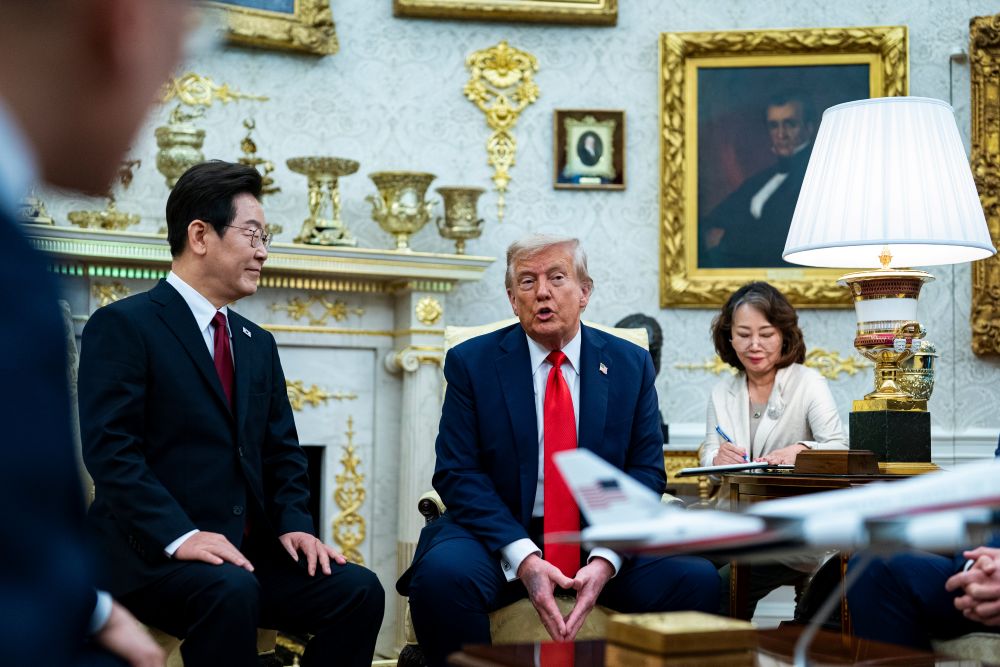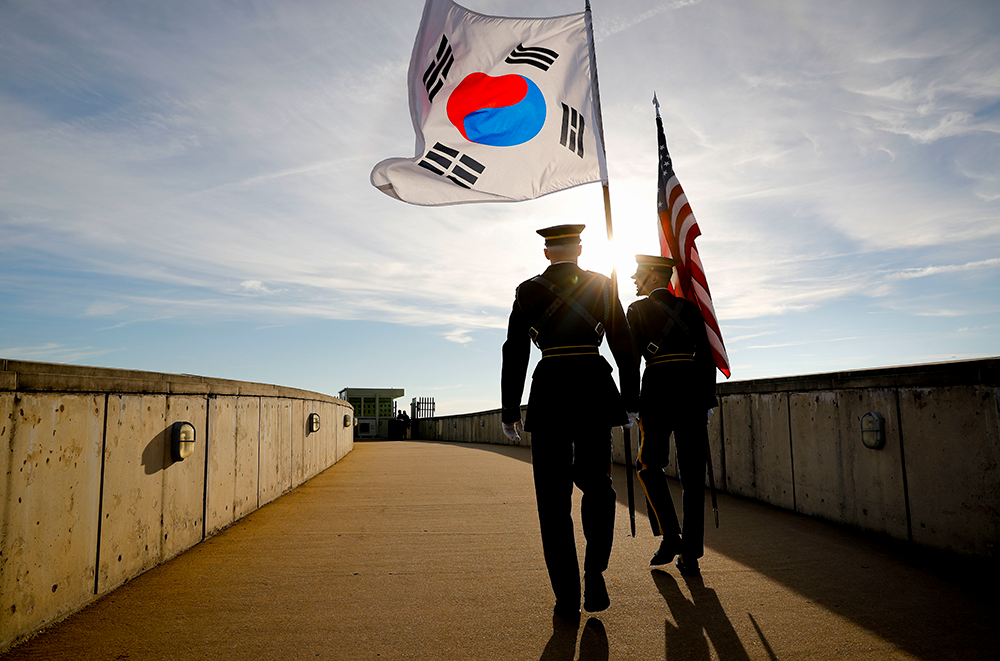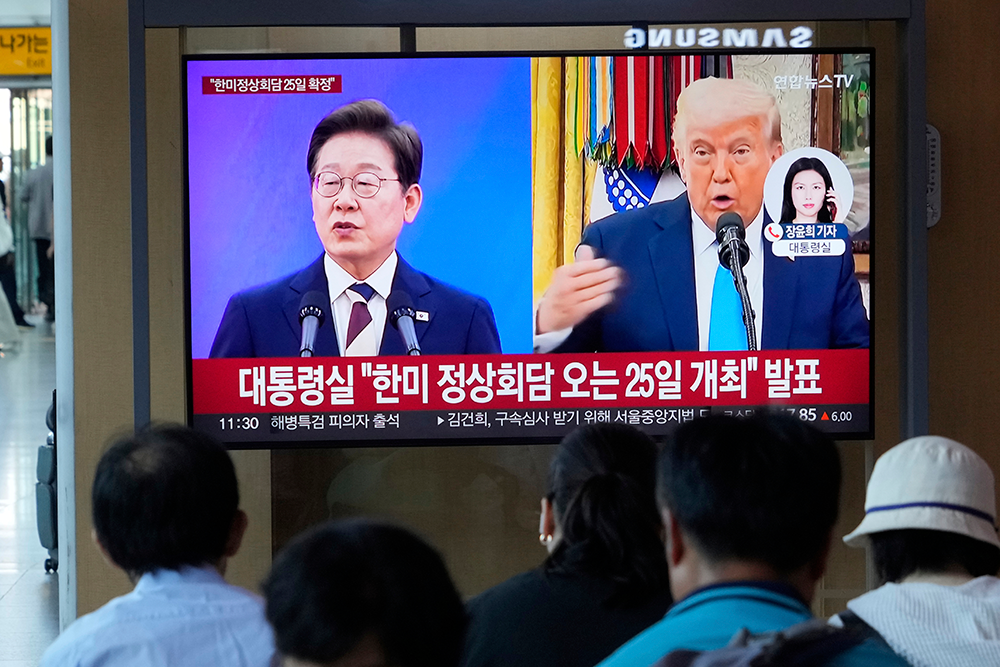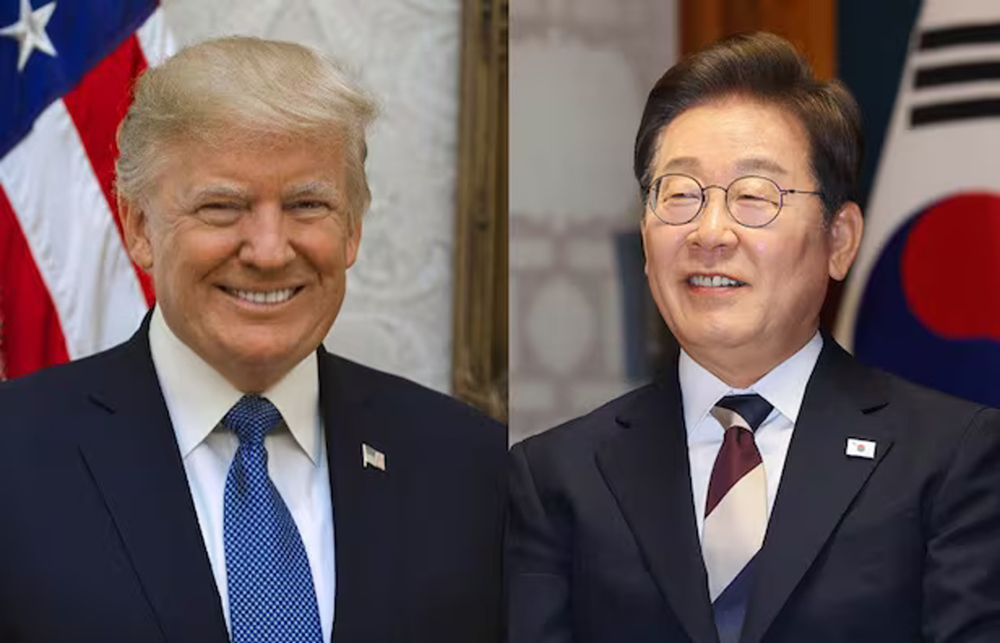
- #South Korea
- #US Foreign Policy
- #US-ROK Alliance
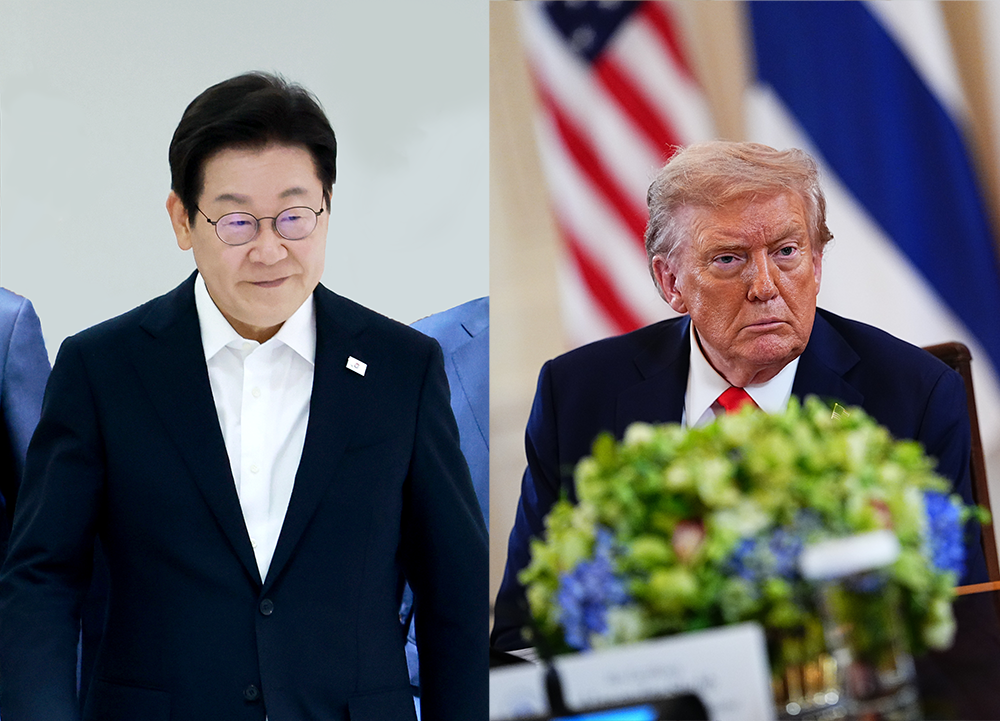
Key Takeaways:
- While Trump and Lee are in agreement on some issues, the upcoming summit remains unpredictable as Trump is expected to return to his transactional demand that South Korea pay more for its own defense, leaving the task of limiting damage to the alliance to President Lee. His challenge will be dealing with Trump's personality and establishing a positive personal relationship.
- President Lee's top priority will be to solidify the details of the recent U.S.-ROK trade deal and to bring stability to the economic relationship. In order to prioritize the economic dimension, Lee will likely be prepared to engage on security issues on the U.S.'s terms and shape them to South Korea's advantage rather than outright resisting U.S. proposals.
- The summit is a critical moment for South Korea to define its role in a changing region. President Lee must work to prevent Seoul from being sidelined in future U.S.-North Korea diplomacy, as both Washington and Pyongyang tend to prefer direct talks. Additionally, the meeting occurs as South Korea attempts to balance its security alliance with the U.S. and its vital economic relationship with China. How Lee navigates U.S. pressure to take a clearer stance on China will be a key factor in his long-term foreign policy success.
When
South Korea’s Lee Jae Myung visits Washington to meet with Donald Trump on August
25 it will bring together two leaders with more in common than may be obvious.
Both are looking to reshape their respective countries and have near unwavering
support in their respective legislative bodies. Both were targets of
assassination attempts. Both want to see South Korea take greater
responsibility for its own defense, and both prefer diplomacy with North Korea.
These commonalities may create common ground and enable a quick rapport between
the two leaders.
But Trump’s
willingness to nakedly exploit the existing power imbalance between the two
countries will make the summit unpredictable. He will be uninterested in the
finer details of existing agreements or in the give and take negotiations
traditionally entail. Instead, he will seek to press his advantage—especially
on security issues—asking South Korea to pay more for its own defense, pay more
for hosting US troops in South Korea, and contribute more to the US economy.
President Lee’s task will be to limit damage to the alliance even as he tries
to reach advantageous arrangements for South Korea.
For President
Lee, reaching clarity on the late July tariff agreement between the two
countries will be at the top of his agenda. While the agreement sets out a 15%
tariff agreement on auto imports from South Korea, many other elements of the agreement
are unclear. How the $350 billion worth of investments by South Korea into the
United States will be allocated needs further clarification. South Korea’s
purchase of $100 billion of US liquified natural gas has been announced but how
that will be work is not fully resolved. And expectations for South Korea’s
purchase of US agricultural and beef products are unclear. Adding detail to
make the existing agreement workable would allow for some semblance of stability
to return to the economic relationship. That in itself would be a successful
result for President Lee.
But progress
on the economic side of the relationship will be closely tied to South Korea’s evolving
role in its own security as the United States seeks “strategic flexibility” in
the region. The core piece of this flexibility is the potential transfer of
wartime operational control, generally referred to as OPCON transfer. On this,
Seoul will likely indicate that Washington is knocking on an open door.
OPCON
transfer has a long history of discussion between South Korea and the United
States and is a political dividing line in South Korea. While progressives like
Lee Jae Myung seek to speed that transfer, conservative leaders have sought its
delay. The plan was originally agreed to in 2006 by Roh Moo-hyun and then
delayed twice under the conservative administrations of Lee Myung-bak and Park
Geun-hye. The progressive administration of Moon Jae-in agreed with the first
Trump administration to switch transfer from a time-based determination to one
that was conditions-based.
Lee
is now preparing to make his own mark on the OPCON discussion. Just weeks ahead
of the planned summit, South Korea’s State Affairs Planning Committee produced
a plan that calls for OPCON transfer to take place by 2030—the end of Lee’s
term. Lee likely intends to use this unofficial plan to demonstrate that South
Korea stands ready to pursue OPCON transfer in close coordination with the
United States and soften US demands in the process.
A
key part of the OPCON discussion will be the role of US troops and the
potential withdrawal of a portion of those troops as the US repositions around
the region in order to better handle potential challenges and threats. When the
news first broke that the US was considering the withdrawal of roughly 5,000
troops from South Korea—approximately 20% of all forces currently based in
Korea—it revived fears that Trump was considering a full withdrawal.
But a
partial withdrawal need not be a major hurdle in the US-Korea alliance. Troop
drawdowns have happened in the past, occurring roughly once every 15 years. President
Lee’s task for the summit will be to lay a foundation so that if a withdrawal
takes place, South Korea is able to shape the process of how that
withdrawal takes place, blunting the Trump administration’s worst instincts to undertake
such a withdrawal quickly and unilaterally.
Another important challenge for President Lee will be
securing South Korea’s role in future diplomacy with North Korea. While North
Korea has taken a back seat for Trump thus far in his second administration, the
administration is likely to attempt to rekindle the relationship Trump had with
Kim Jong Un in the coming year. This leaves President Lee in a bind. North
Korea generally prefers to deal directly with the United States. And President
Trump will prefer to deal directly with Kim Jong Un. That leaves South Korea on
the outside looking in. The ongoing thaw in North-South relations may prove
beneficial, but Mr. Lee’s personal rapport with Mr. Trump will likely be a more
important factor in ensuring he remains in the room when the next round of
diplomacy inevitably ramps up.
Finally, this summit takes place amidst a shift in South
Korea’s foreign policy. While President Lee has sought to maintain momentum
with Japan by visiting Tokyo before heading to D.C., he is also seeking to
better balance the security relationship with the United States and the
economic relationship with China. This positioning will likely rub against the
call from Washington for its allies in the region to make clear their positions
on China and potentially be ready to declare their intended role in the case of
a US-China conflict. How that will play into summit outcomes is less understood
but bears close watching. The ability to balance those relationships will be a
key factor in President Lee’s foreign policy success.
The first summit between Trump and Lee offers the chance to
reset the Korea-US relationship. Both Trump and Lee started their terms
recently and this summit will shape the tenor of their relationship over the
next four years. If they establish an easy rapport, it may not ease the demands
emanating from the White House, but it may mean increased flexibility on those
demands. It may also ensure that South Korea has a seat at the table when the
next round of diplomacy with North Korea begins. However, should their meeting
be defined by personal friction the consequences for South Korea could be
long-lasting. Demands from President Trump on cost sharing, defense spending,
and trade could suddenly grow teeth as administration staff work toward the
president. For Lee, the next five years of his diplomacy hang in the balance.

Mr. Friedhoff is the Marshall M. Bouton Fellow for Asia Studies at the Chicago Council on Global Affairs.
